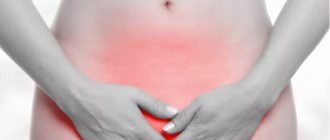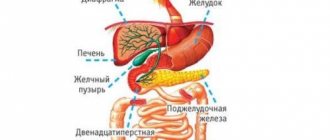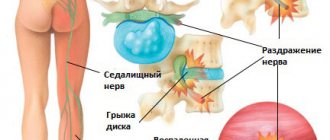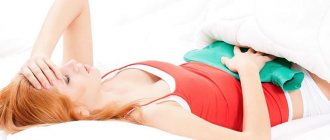A burning sensation in the chest is a clinical manifestation of a number of pathological conditions. The rib cage (or, as it is also called, the chest) is a part of the body that contains the entire chest cavity and the upper component of the peritoneum. They are a “receptacle” for vital human organs. Discomfort in them often signals the presence of pathologies of the heart, liver, gastrointestinal tract or lungs.
You can get rid of this symptom forever only by identifying its initiating factor. To do this, you need to seek professional advice. The specialist with whom you make an appointment will conduct an examination and prescribe appropriate diagnostic tests, thanks to which it will be possible to accurately diagnose, determine a treatment strategy and begin to implement it.
Where to go if you have a burning sensation in your chest?
Are you a resident or guest of the capital and are you faced with a similar problem? Contact CELT. Our clinic is multidisciplinary and has departments of various specializations. You can make an appointment with a cardiologist, therapist, neurologist or gastroenterologist and get the help you need.
Our diagnostic department offers ample opportunities for correct diagnosis and identification of pathological conditions in the initial stages of development. Our staff is staffed with highly qualified specialists: doctors of the highest category, candidates and doctors of science with decades of medical practice behind them.
You can find out our prices by going to the “Services and Prices” tab in this section. To avoid misunderstandings, we recommend that you check the numbers with our operators by calling the number.
Physiological causes of burning in the chest
Experts identify a number of initiating factors for such a phenomenon as a burning sensation in the chest. The most common of these is poor diet, including fatty, spicy, salty foods, carbonated water and fast food, along with frequent overeating or eating food before bed.
The above leads to the contents of the stomach entering the esophagus, where it irritates the mucous membrane, which causes discomfort. They are accompanied by nausea, heartburn and belching, as well as bloating. In order to exclude this, it is enough to change your diet by minimizing the above-mentioned foods, optimizing portion sizes and eliminating the consumption of food before bedtime.
The same can be said about excessive consumption of coffee and alcoholic beverages, as well as smoking. All of them can cause a burning sensation in the chest, which will stop as soon as their consumption is reduced to a reasonable limit. It is important to understand that it is not the norm and its appearance is a reason to visit a doctor.
A number of reasons are associated with diseases of the cardiovascular system, characterized by the inability of blood vessels to provide the heart with a sufficient volume of oxygen. This occurs with ischemia, which is manifested by a local decrease in blood supply due to narrowing or blockage of the arteries, due to which the most important organ of the human body suffers.
Do not forget about neurological factors, when a burning sensation occurs due to compression or damage to the nerve ending or in stressful situations, with neuropsychiatric disorders. In addition, it can be caused by pathological conditions characterized by damage to the bronchial mucosa or trachea.
What can itching and feeling of heat in the body lead to?
These symptoms are so uncomfortable that it is simply impossible to ignore them. All attention is concentrated on them, which is why a person becomes inattentive, absent-minded, disruptions appear in his professional activities, and his performance decreases.
Irritability and tension reach a peak state. Depression and nervous breakdowns are possible. Such overexertion leads to mental imbalance. The patient's sleep is disturbed and insomnia develops. As a result, during the day he feels exhausted and sleep-deprived.
Severe itching in the intimate area sometimes leads sufferers to the point that they use various objects that injure the mucous membrane and skin in this area.
Scratches on the skin and mucous membranes can become infected, inflamed and suppurate, spreading the process to larger areas.
Diseases that cause burning in the chest
Only a doctor who has everything necessary for diagnosis can identify the cause of a burning sensation in the chest in the middle, right or left. You should not engage in self-diagnosis, as it is fraught with the risk of complications.
| Diseases | Triggering factors |
| Hearts | Sharp pain and burning in the chest near the heart may be a sign of a serious condition that requires immediate medical attention. This occurs with the following diseases:
|
| Liver | Experts identify a number of diseases of the liver and biliary tract, the symptoms of which are manifested by a burning sensation in the sternum. These include:
Other clinical manifestations of the above diseases are as follows:
|
| Gastrointestinal tract | A phenomenon such as heartburn always leads to a burning sensation and pain symptoms due to irritation of the walls of the esophagus by gastric juice. As for diseases, one of the symptoms of which is a burning sensation in the chest, they are as follows:
|
| Intercostal neuralgia | It is a pain syndrome that develops as a result of damage to the intercostal nerves due to various reasons, ranging from compression to infection or intoxication. This syndrome is a sign that the patient has diseases of the organs of the chest wall, mediastinum, and spinal cord. Clinical manifestations are as follows:
|
| Pneumonia | Acute inflammatory infectious lesion of the lungs, which can be lobar or focal. Symptoms of the first include a cough, a sharp increase in temperature, burning and pain in the sternum, and weakness. As for the second, its onset is hardly noticeable; it appears after acute respiratory diseases. Clinical manifestations in addition to pain on inspiration, shortness of breath, cyanosis, wet cough. |
| Scoliosis | Persistent sideways curvature of the spinal column relative to its axis. A burning sensation in the chest occurs due to the fact that with this disease, abrasion of the intervertebral discs and compression of the nerve endings occurs, which provokes serious discomfort. |
| Intercostal myositis | Inflammatory processes of skeletal muscles located between the ribs. On palpation, pain symptoms appear along the entire intercostal space. Experts identify three pain points: the spinal column, the sternum and its lateral surface. In addition, there is swelling of the affected part, redness or, conversely, paleness of the skin, sore throat, cough and headache. |
Objective grounds
Itching is a sensation accompanied by the need to scratch the skin. There are several opinions about its occurrence:
- irritation of certain pain receptors;
- occurs independently under the influence of mediators - histamine, serotonin, adrenaline, opioids and others.
The second theory is supported by the fact that itching sensations appear only in the superficial layers of the dermis and the mucous membranes adjacent to it, while pain occurs anywhere in the body. In addition, pain and itching can occur in isolation from each other.
Itching can be localized or spread throughout the body. Due to its occurrence, it is divided into:
- propriocevtive - appears due to a violation of the structure of the dermis;
- neuropathic – observed when the nervous system is damaged;
- neurogenic – without damage to the NS;
- psychogenic – mental disorders.
All types of symptoms differ in intensity, duration and place of occurrence.
Itching of the skin of the body often has objective causes and accompanies any disease. First of all, these include skin diseases :
| Type of disease | Cause | Why does it itch? | Localization of sensations |
| Dermatitis | Nervous stress, exposure to cold, allergens | Small rashes, peeling of the dermis. | Any part of the body |
| Dermatophytosis | Fungus | The vital activity of fungi in the upper layers of the skin | Scalp, smooth skin |
| Lichen | Fungi and viruses against the background of reduced immunity | Peeling of the epidermis | Scalp |
| Pediculosis | Lice | Parasite bite | Head, pubis |
| Psoriasis | It is not completely clear. Presumably: low immunity, heredity, infections | Dry, scaly rashes | Elbows, head, lower back, genital mucosa |
| Scabies | Mite | Parasite bite and blisters. Accompanied by severe itching, which intensifies in the evening | Interdigital area |
| Xerosis | Infections, hepatitis, liver cirrhosis, kidney disease | Coarsening and peeling of the skin | Any parts of the body |
| Neurodermatitis | Stress, allergies, hormonal and digestive disorders | Damage to the top layer of skin | Neck, skin folds, bends of knees, elbows |
Another skin condition that causes "scabies" is eczema . It is believed that it occurs against the background of reduced immunity. It can be triggered by stress, nervous tension, as well as hormonal imbalances and allergic reactions.
Eczema is characterized by the formation of foci of rashes in the form of “wet” blisters and pimples, and in some cases dry ones. The itching in this condition is simply unbearable; it is the main symptom of the pathology. The elements are localized on the neck, head, flexor surfaces of the elbows, ankles and knees.
The skin may itch if there are diseases of the internal organs :
- Kidney - a symptom manifests itself on the skin and in the genital area.
- Liver - spreads to the face and hands, while the skin turns yellow.
- Thyroid – dry, flaky and itchy skin on the hands and face.
- Anemia.
- Diabetes – the skin and mucous membranes of the genital organs begin to itch due to increased blood glucose levels.
- Oncological diseases.
- Hormonal disorders - menopause, pregnancy, menstrual syndrome.
- Viral infections - herpes, AIDS.
- Dehydration.
Which doctor should I contact if I have a burning sensation in my chest?
Regular repetitions of this symptom are a reason to contact a therapist. He will conduct an examination, collect anamnesis, ask questions that interest him - and either prescribe treatment or refer him to:
- gastroenterologist - if gastrointestinal diseases are suspected;
- orthopedist - if osteochondrosis is suspected;
- neurologist - if osteochondrosis is suspected;
- cardiologist - if you suspect diseases of the cardiovascular system.
They, in turn, will prescribe diagnostic tests to make an accurate diagnosis.
Psychogenic nature of burning and itching
The term “psychosomatics” is quite common these days. It is defined as the occurrence of bodily manifestations based on psychological factors.
If during the examination of the patient it is not possible to find objective reasons causing such impressions, the matter is most likely in the mental sphere of the person. Or rather, in its negative manifestations.
For example, itching and burning sensations in the body develop against the background of a stressful situation . If it was a one-time problem, then after it is eliminated, the unpleasant manifestations also disappear.
As for chronic stress , these symptoms may persist or even intensify. This, in turn, increases nervous tension and aggravates the situation. It turns out to be a vicious circle.
There is an understandable explanation for the appearance of skin paresthesias in psychological disorders. With negative emotions, the body increases the production of serotonin and dopamine. It is these neurotransmitters that provoke the occurrence of itching and burning, usually without visible skin elements. But sometimes a rash, dryness and peeling may appear.
How is the diagnosis done?
In order to diagnose a symptom, the doctor only needs to conduct a survey and hear the patient’s complaints. The disease causing it can be diagnosed by conducting comprehensive studies. First of all, the patient is examined and a medical history is collected, after which laboratory tests of blood and urine, a detailed blood test, and determination of hormonal levels are prescribed. In addition, hardware tests are prescribed, the selection of which is based on preliminary studies. It could be:
- X-ray of the sternum;
- Ultrasound scanning of the internal organs of the chest cavity;
- Electrocardiography;
- Gastroenterological studies.
Preventive actions
In order to prevent the development of this unpleasant symptom, you need to take a number of measures:
- Treat inflammatory processes in a timely and correct manner;
- Eat right, minimize the consumption of salty, spicy, excessively fatty foods;
- To live an active lifestyle;
- Avoid stressful situations;
- Follow a daily routine, set aside enough time for sleep;
- Regularly undergo preventive examinations.
Don't forget: a burning sensation in the sternum can be a sign of serious illness. Its occurrence is a reason to seek professional medical help!
Make an appointment through the application or by calling +7 +7 We work every day:
- Monday—Friday: 8.00—20.00
- Saturday: 8.00–18.00
- Sunday is a day off
The nearest metro and MCC stations to the clinic:
- Highway of Enthusiasts or Perovo
- Partisan
- Enthusiast Highway
Driving directions
Treatment
Help before diagnosis
To reduce burning sensation, a woman needs to carefully monitor the hygiene of her genitals and use special products for intimate areas. It is best to choose natural underwear that does not cause excessive sweating and does not press on the skin. For vaginitis, it is worth regularly changing sanitary pads, which will absorb discharge and reduce maceration of the skin around the vulva.
A burning sensation in the intimate area is often caused by the proliferation of pathogenic microbes. To destroy them, you can irrigate the external genitalia of women with a weak solution of chlorhexidine or chamomile decoction. It is not recommended to do vaginal douching without a gynecologist's prescription. It is impossible to effectively eliminate burning in the perineal area without etiotropic treatment, so the woman should consult a doctor.
Conservative therapy
For uncomplicated forms of the disease in women, local treatment is often sufficient. Therapeutic measures include the appointment of suppositories with antibacterial or antifungal action, which depends on the etiology of the pathogen. To eliminate discomfort, local baths with disinfectant solutions are recommended. Ointments with topical corticosteroids help relieve severe burning and itching.
For specific acute vaginitis, therapy is selected based on the sensitivity of the pathogen: gonorrheal infection is treated with penicillins, tetracyclines, chlamydial and mycoplasma - with macrolides, fluoroquinolones, trichomonas - with nitroimidazoles. For chronic candidal vaginitis, systemic antimycotics are effective. For the treatment of herpes in women, drugs from the acyclovir group are used.
Gynecological diseases are accompanied by vaginal dysbiosis, which increases burning and discomfort, so pathogenetic treatment is aimed at normalizing the microflora. Vaginal suppositories with lactobacilli, as well as oral combined probiotics, are effective. For chronic diseases, immunomodulators are recommended.







